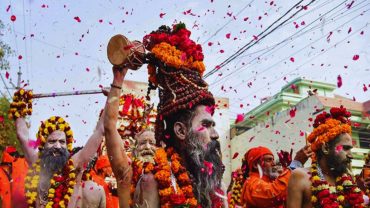Discover the timeless “History of Ayodhya” a city steeped in legend and legacy, from its mythical beginnings to its contemporary significance. Explore its cultural tapestry, mythological roots, and pivotal historical moments in this comprehensive journey through time.

Introduction
Nestled in the heartland of India lies a city that has captured the imagination of millions for millennia – Ayodhya. This ancient city, steeped in history and mythology, weaves a tale as old as time itself. From its legendary origins to its modern-day significance, the history of Ayodhya is a rich tapestry of culture, religion, and heritage. Join us as we embark on an enlightening journey through the annals of time to uncover the captivating history of Ayodhya.
The Legendary Beginnings
The History of Ayodhya traces its roots back to the Treta Yuga, the second age in Hindu cosmology. According to Hindu mythology, it was here that Lord Brahma, the creator of the universe, established Ayodhya as his divine abode. The name ‘Ayodhya’ is derived from the Sanskrit words ‘Ayodhya,’ meaning ‘unconquerable,’ and ‘Ayudh,’ meaning ‘weapons,’ signifying its invincibility.
The Ramayana Connection
Perhaps the most significant chapter in the “History of Ayodhya” revolves around Lord Rama, the seventh avatar of Lord Vishnu. Ayodhya is celebrated as the birthplace of Lord Rama, and it was in this city that he spent his formative years as a prince. The epic Ramayana, authored by Sage Valmiki, narrates the life and adventures of Lord Rama, including his exile and triumphant return to Ayodhya.
Also Read: Ram Janmabhoomi (Ayodhya): Unraveling the Threads of History and Faith
The Grandeur of Ayodhya During Lord Rama’s Reign
During Lord Rama’s rule, Ayodhya flourished as a city of unparalleled grandeur. The magnificent palaces, meticulously planned streets, and the benevolent reign of Lord Rama made Ayodhya a utopian city of its time. His rule is often referred to as ‘Ram Rajya,’ an era of peace, prosperity, and righteousness that set a benchmark for governance.
The Mughal Influence
The History of Ayodhya also intersects with the Mughal dynasty, a chapter that added layers of cultural diversity to its tapestry. In the 16th century, the Mughal Emperor Babur visited Ayodhya and mentioned it in his memoirs. It was his great-grandson, Emperor Aurangzeb, who ordered the construction of a mosque on the disputed site in Ayodhya, which would later become a source of contention.
The Babri Masjid
The Babri Masjid, constructed in the 16th century, became a point of contention between Hindus and Muslims. Hindus believed it to be the birthplace of Lord Rama, while Muslims revered it as a place of worship. The dispute over the site escalated over the centuries, eventually leading to its demolition in 1992, a momentous event that shaped modern History of Ayodhya.
The Ayodhya Verdict
In a historic judgment in 2019, the Supreme Court of India resolved the Ayodhya land dispute. The court ruled in favor of the construction of a grand Ram temple at the disputed site while also allocating an alternative piece of land for the construction of a mosque. This landmark decision marked a significant step towards reconciliation and the restoration of peace in Ayodhya.
Modern Ayodhya
Today, Ayodhya is experiencing a resurgence of its cultural and religious significance. The construction of the grand Ram Temple, a symbol of Lord Rama’s enduring legacy, is well underway and has drawn the attention of people from around the world. Pilgrims and tourists alike flock to Ayodhya to witness the transformation of the city and to be a part of this historic moment.
Ayodhya’s Architectural Marvels
Ayodhya boasts a plethora of architectural marvels that showcase the city’s rich heritage. The ancient city is adorned with intricately designed temples, each with its unique style and history. The Kanak Bhavan Temple, dedicated to Lord Rama and Sita, is a prime example of stunning architecture and holds deep religious significance. The Nageshwarnath Temple, believed to be the birthplace of Lord Rama’s sons, Lava and Kusha, is another testament to Ayodhya’s architectural splendor.
The Essence of Ayodhya’s Festivals
Ayodhya comes alive during festivals, celebrating its rich cultural heritage. Diwali, the festival of lights, holds particular significance in Ayodhya as it commemorates Lord Rama’s return to the city after defeating the demon king Ravana. The entire city is illuminated, and grand celebrations take place, making it a sight to behold. Ram Navami, Lord Rama’s birthday, is another festival that sees devotees from all over the world congregating in Ayodhya to seek blessings.

The Ongoing Cultural Renaissance
History of Ayodhya and religious importance have sparked a cultural renaissance in the city. Artists and musicians draw inspiration from its rich heritage, creating vibrant art and melodious music that resonates with the essence of Ayodhya. This resurgence is not only enriching the city’s cultural landscape.
Conclusion
The history of Ayodhya is a captivating narrative that spans millennia, from its mythical origins to its modern-day revival. It is a city that embodies the rich tapestry of Indian culture, religion, and heritage. As the construction of the Ram Mandir continues, Ayodhya’s legacy as the birthplace of Lord Rama is being celebrated and embraced by people from all walks of life.
Also Read: Kashi Vishwanath Temple, Varanasi: A Sacred Saga of Spirituality and Architectural Splendor
FAQs for History of Ayodhya:
What is the significance of Ayodhya in Hindu mythology?
Ayodhya is revered as the birthplace of Lord Rama, making it one of the most sacred cities in Hinduism.
What is the history behind the Babri Masjid controversy?
The Babri Masjid controversy revolved around the disputed site in Ayodhya, where Hindus believed Lord Rama was born, while Muslims considered it a place of worship.
How did the Ayodhya land dispute reach its resolution?
The Supreme Court of India resolved the dispute in 2019 by allowing the construction of a Ram temple at the disputed site and providing an alternative piece of land for a mosque.
What is the significance of the Ram Temple construction in Ayodhya?
The construction of the Ram Temple is seen as a symbol of Lord Rama’s legacy and has garnered global attention.



Comment (0)